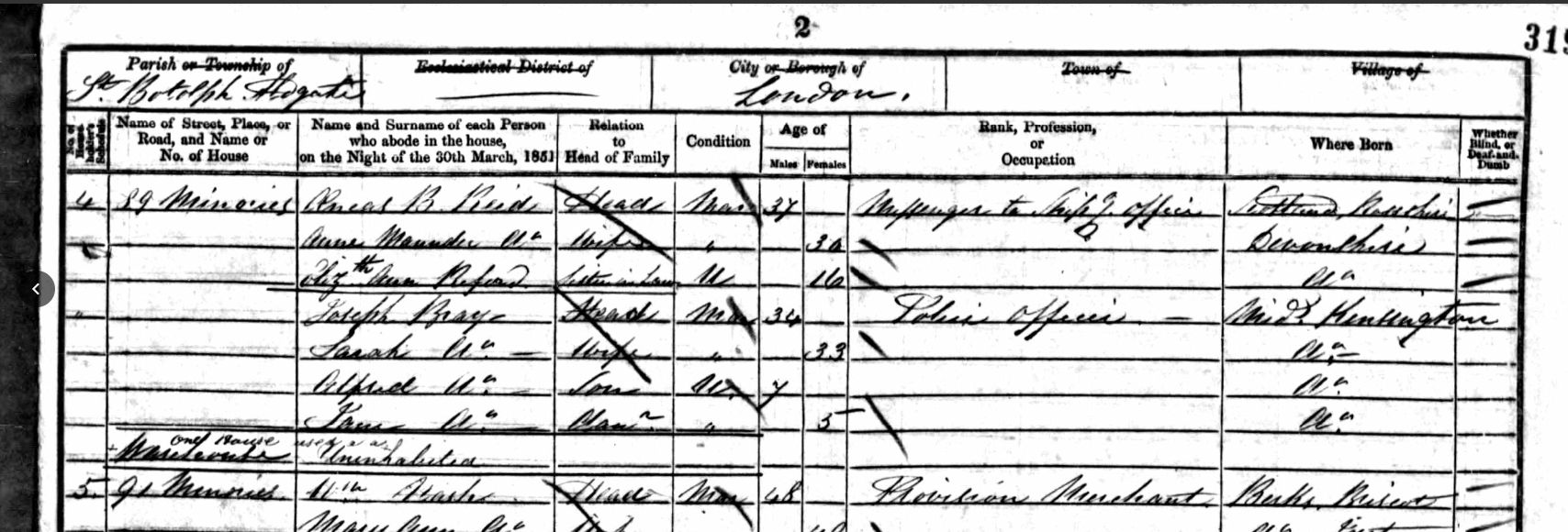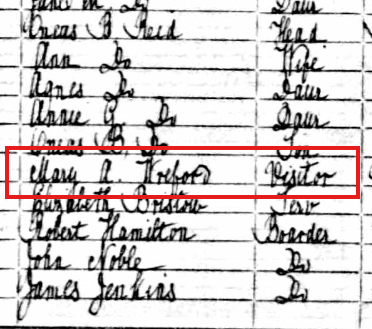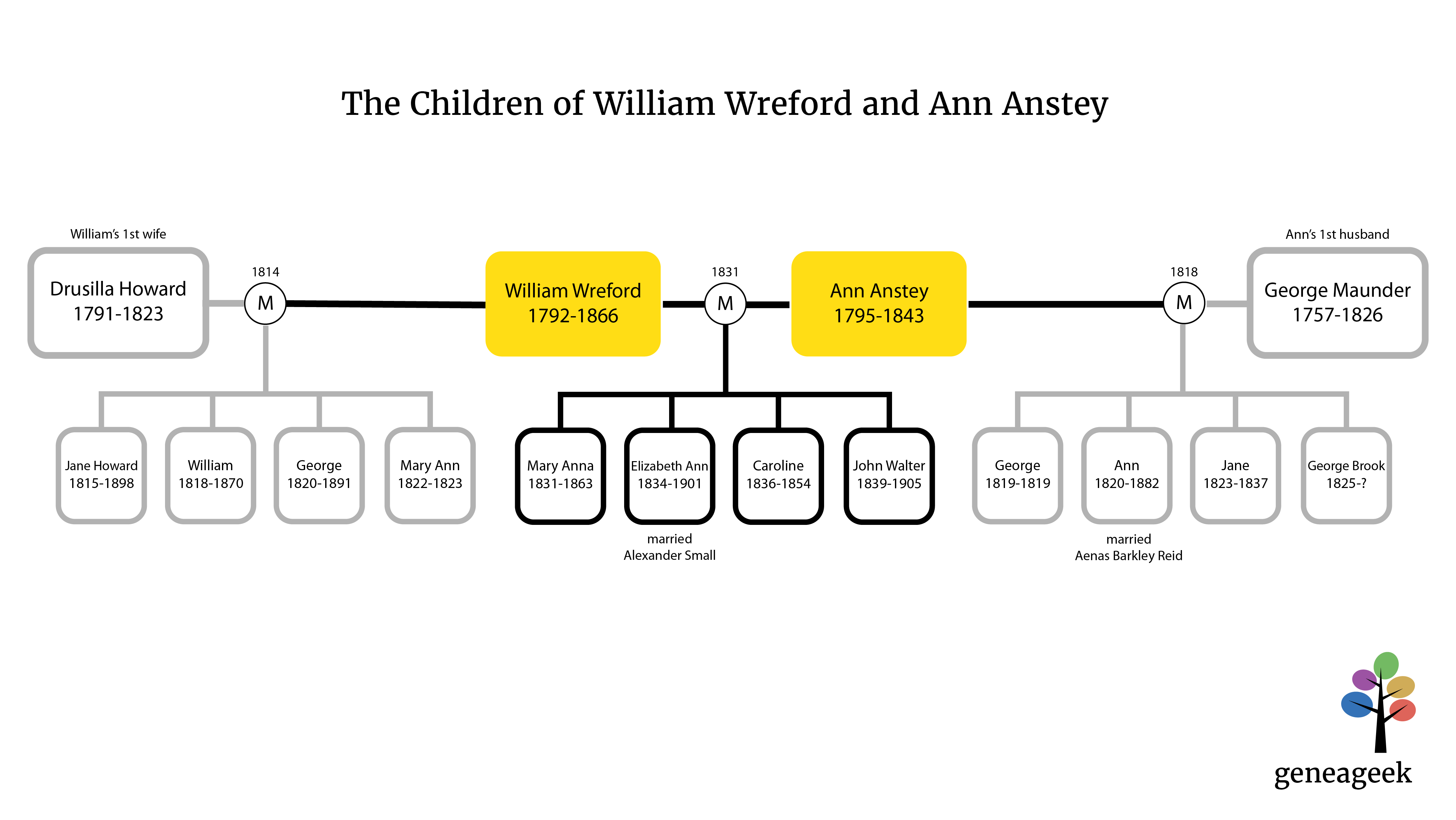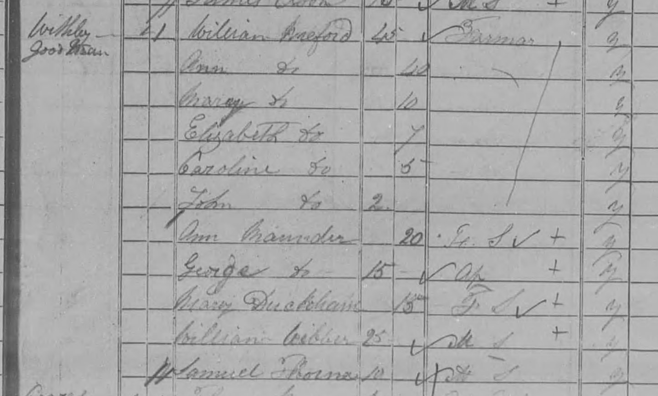Some time ago, I wrote about my ancestor William Wreford’s second wife, Ann Maunder (see post: Good Tithings). I had long thought that Maunder was her maiden name but discovered she was likely born Ann Anstey, and married a man named George Maunder. Today I stumbled on more evidence to support this theory.
William and Ann had a daughter named Elizabeth Ann Wreford born in Tiverton, Devon. While ’rounding out’ her story, I found her in the 1851 census in London. Elizabeth was in the home of ‘Aeneas B. Reid’ and his wife ‘Anne Maunder Reid’, recorded as a sister-in-law. Obviously the name Maunder jumped out at me. Mrs Reid’s age also tied in with the details for Ann and George Maunder’s daughter Ann (her baptism record can be seen in the earlier post).

Luckily, I could access the image of the marriage Ann Maunder (jr) to Aeneas Barkley Reid a couple years earlier in 1849. It confirmed her father’s name was George Maunder and also held the signatures of two witnesses: William Wreford and Mary Wreford.

(I believe these witnesses are likely to be Ann’s step sibling (son of William Wreford to his first wife) and his wife, who also lived in London at the time.)
After this discovery, everything has started tumbling into place. Another half sibling, Mary Anna, who I was previously unable to pin down, shows up in the census record with the Reids in 1861.

She also appears to have been buried in the family plot of Elizabeth Ann, who had married Alexander Small in 1853.

Mary Anna and Aeneas Barkley Reid also show up as witnesses to that marriage,

and the Small’s son is recorded with Elizabeth Ann’s brother Willliam in the 1861 census.

What tops it off for me, is seeing that my direct ancestor William Wreford was also buried in the Small family plot (4029).

All of this ‘coming together’ is very satisfying, and gives me an insight into how much the siblings lives were entwined with each other.
And of course, I’m now pretty confident William Wreford’s wife Ann Maunder was born Ann Anstey.





